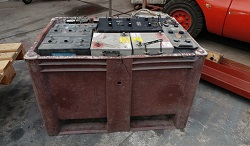Particle reconstruction at CERN
The discovery of the nuclear particle muon has puzzled scientists for decades. Muons are charged particles, like electrons and positrons, but 200 times as heavy. To study the properties and phenomena of particles, large accelerators, such as the Large Hadron Collider (LHC), are used which accelerate elementary particles like protons to speeds close to the speed of light. The different particles and phenomena produced in high-energy collisions in the LHC are detected by the Compact Muon Solenoid (CMS) that resembles a large cylindrical onion. The layers of detectors measure the different particles, and this information is used to answer questions regarding the origin of substance and the forces in the Universe. The objective of the EU-funded CMSMURECOTRIGBSM project was to optimise muon particle reconstruction with the CMS obtaining the best possible resolution and efficiency. Data collected from the muon detectors was thoroughly investigated to extrapolate time-of-flight measurements. Also, the muon trigger requirements and paths were studied in the context of commissioning and integration for the LHC start-up. Future aims of the proposed work are to support the potential of CMS to study muons in their final state.




